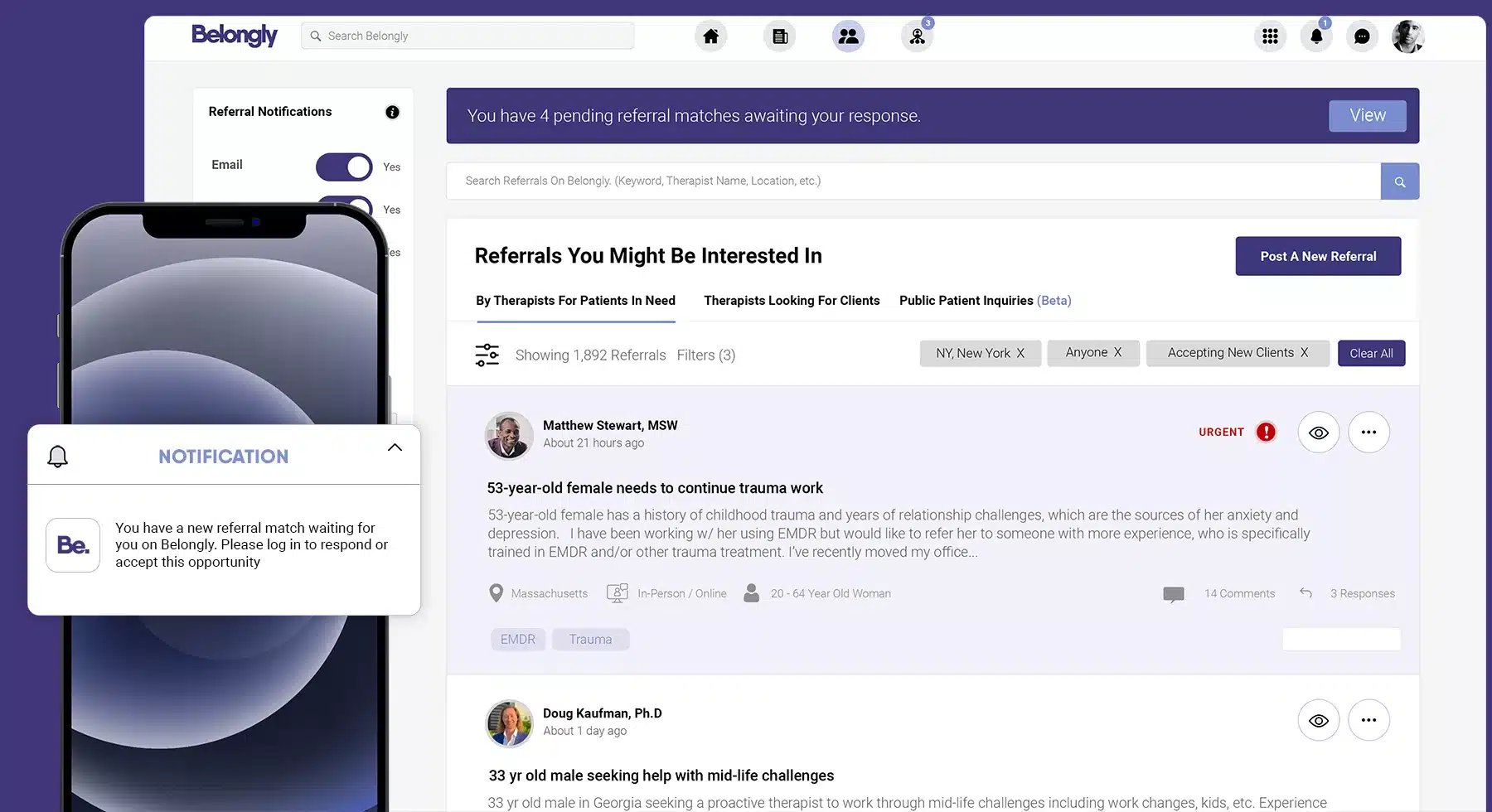How to empty your waitlist while growing your business. Waitlists are a terrible client experience). Imagine showing up at your local emergency room with a broken leg and being told, “I’m sorry, we aren’t accepting any new patients right now. Can you come back in a few months?” Would you wait to be treated? Try to find another hospital? Manage the injury on your own?
As ludicrous as this scenario may seem, the equivalent is happening at mental health clinics and therapy practices all over the country as clinicians struggle to meet the increasing demand for services. The Washington Post recently reported waitlists of 5 to 10 months in the Boston area, with some surpassing a year. The experience is frustrating and demoralizing for patients, but what is the alternative when there are only so many hours in the day?
At Belongly, we believe that waitlists run counter to the Hippocratic oath of “do no harm.” Like medical conditions, psychological distress tends to get worse if left untreated. Consequently, our goal as therapists should be to get every patient the care they need when they need it. While waitlists may provide some sense of security for therapists by promising a steady stream of business, there are alternatives that prioritize patients’ needs without sacrificing your bottom line. Here are 7 strategies for avoiding waitlists:
Keep a referral network
Referring patients to other providers can be time-consuming and cumbersome, but it doesn’t have to be. Belongly offers a simple, secure, and effective way for therapists to refer to one another. With thousands of therapists on Belongly, you can be sure to find the right fit for your patient. Likewise, you can rest assured that you will be able to quickly fill any openings in your schedule with referrals from verified mental health professionals.
Use nurture tools
Nurture tools help improve the new lead experience by ensuring timely responses to patient inquiries. For example, autoresponders can provide patients with basic information about your services, specializations, and availability. Email newsletters are another way to share information and updates with multiple patients, helping them to stay connected to you and your practice.
Assessment, consultation, and triage
Many therapists offer an initial assessment or phone screen to get a sense of the patient’s needs, background, and the urgency of their situation. This enables them to prioritize patients who need immediate attention and gather the details necessary for an effective referral.
Short-term treatment
A strategy used by many schools and college counseling centers, offering 6-10 therapy sessions enables you to provide focused treatment to more patients. This modality works best with curriculum-based approaches like Dialectical Behavioral Therapy (DBT) when the focus is on learning and practicing coping skills.
Group therapy
Group therapy is another way to provide support and treatment to multiple patients simultaneously, reducing the need for a waitlist. This modality can be especially effective when you have several patients who are seeking therapy for similar concerns.
Flexible scheduling
Some patients have flexible schedules and don’t mind rotating the time of their appointment from week to week. If you regularly get cancellations, you can use these time slots to accommodate patients who would otherwise be waitlisted.
Self-help resources
Consider giving patients access to your blog, podcast, webinars, or other resources to tide them over while they wait for an appointment. They can learn about your services, practice self-help tools, and most importantly, stay connected to your practice.
Keep Reading
Want more? Here are some other blog posts you might be interested in.










